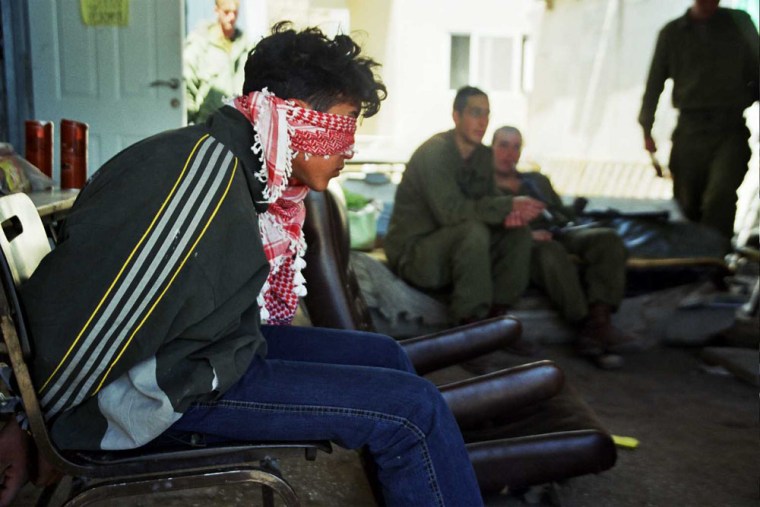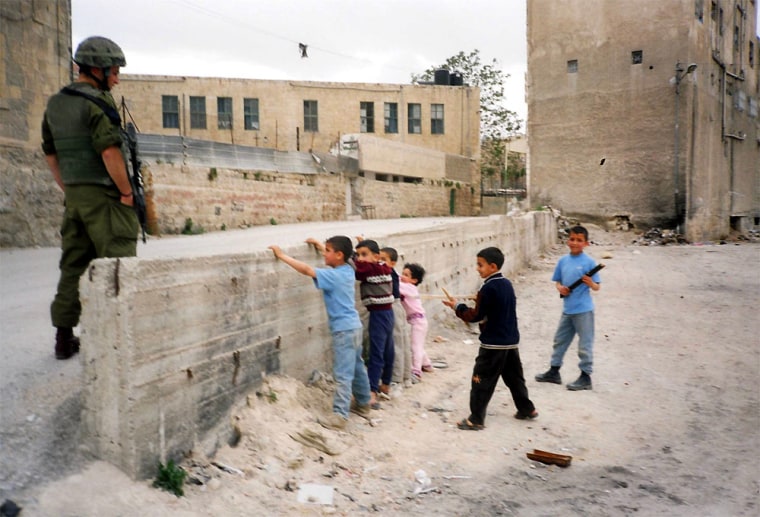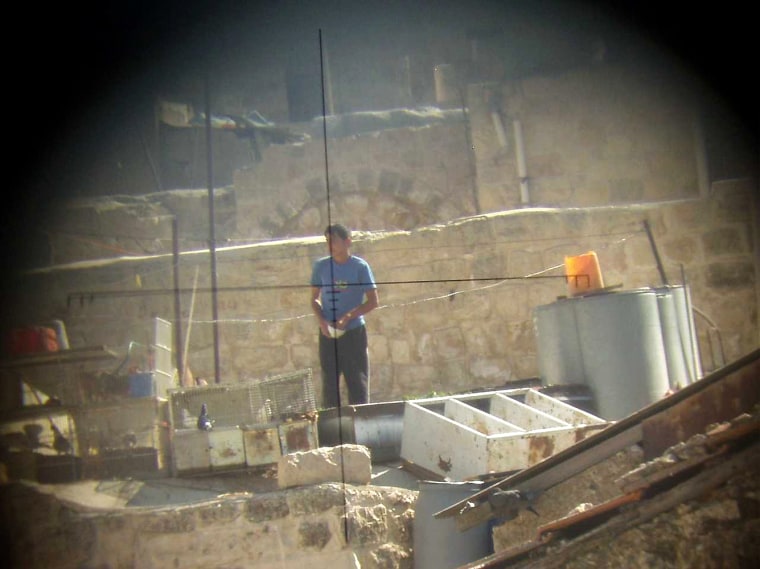A stream of powerful images — of heartbreak, protests and gory violence — can be seen almost daily coming from the Middle East, especially dealing with the Israeli-Palestinian conflict.
These images are nothing new to Israelis — they live with them every day. Yet many have been struck by an unusual new exhibit at the Academy for Geographic Photography in Tel Aviv.
The photo and video exhibit, “Breaking the Silence: Soldiers tell about Hebron,” offers an unusual inside glimpse from the perspective of young Israeli recruits; it shows the grinding routine, the harsh interaction with Palestinians, the quiet lingering hardships of the conflict.
"I'm not surprised at what I see here. I've seen this on TV and read about it in the newspapers. I'm just wondering whether Dostoyevsky was right when he wrote the nature of man is bad," said Ruth Sheinfeld, 70, a recent visitor to the gallery.
"I think it's great that their conscience has awoken,” she said.
A camera, part of a soldier's arsenal
Many Israeli soldiers nowadays carry cameras for personal use, mainly to document themselves and their friends.

The "Breaking the Silence" exhibit was created by four former soldiers who rounded up amateur snapshots from about 60 of their fellow soldiers.
All of the soldiers who shot the photos are in their early 20s, and they illustrate their lives while deployed in the powder keg West Bank town of Hebron.
The four soldiers who put together the exhibit are reluctant to speak to the foreign media because they said their intention in creating the exhibit was to start a debate in Israel alone.
As soldiers their task was to guard the Jewish population in Hebron, a settlement of approximately 500 Jews surrounded by 120,000 Palestinians.
Dealing with the violence of Palestinian terror attacks and the tensions between Palestinians and the Jewish settlers pushed the young soldiers to search for a way to make sense of it all.
Through photography many of the soldiers tried to deal with the gap between the power entrusted to them and their ordinary lives, personal views, military duties and hope for the future.
“The idea,” explained Micky Kratzman, an acclaimed Israeli photojournalist who helped put the exhibit together, "is to show the everyday routine, the essence. It’s very clear who the person behind the camera is and what his job is at the situation shown. This is a self-portrait of a society."
There are no atrocities exhibited on the gallery walls, but what comes through the fuzzy focus and missed exposures are the internal struggles of young people with enormous power, with the ability to make ground-breaking decisions for people under their authority, a responsibility they sometime have trouble reconciling with their own beliefs and attitudes.
Their lenses capture Palestinian detainees bound and blindfolded, Jewish settler boys destroying an Arab's shop, the profane and the mundane of soldiering in a war zone.
‘Distinguish between good and bad’
The first photograph you see upon entering the gallery shows a leaflet posted on the wall by settlers that reads, "You must distinguish between good and bad."
"When I'm in Hebron, I'm not my mother's son, I'm not my sister's brother, and I can't always explain to my father what it feels to be there. What happens there stays there," said Jonathan, one of the soldiers who initiated the exhibit. Like all of the soldiers involved in the project, he asked to be identified by first name only.
Jonathan goes to the gallery on Fridays to speak about the dissonance that comes with serving as a soldier in Hebron.

Both Jonathan and another soldier, Yehuda, explained that their photographs are an attempt to portray the challenge of young soldiers being in a position of power over civilians, of being in the position to determine freedom of movement.
A Jewish family from Hebron entered the gallery while a discussion was going on between soldiers and spectators.
"Is this good or bad?" a little girl asked her father.
"This is a political show," said the father, who couldn't hide his distaste.
"If you did anything that you are ashamed of, you should deal with it, and this is not the way,” the father said to the soldiers.
The soldiers who organized the exhibit completed their mandatory three-year military service. They say that when they are called for reserve duty, they will go. They do not plan to refuse in any way, and say this exhibit is not aimed at stating a political view.
"I'm also assigned to the West Bank as a soldier. Things do look like that, but I think this is a political move, and I disagree with it," said Tom, a 19-year-old soldier, who visited the exhibition in civilian clothes.
The show consists of 90 still images and two video presentations of the soldiers’ friends describing their personal experiences in Hebron.
“We want to open this discussion," said gallery manager Giora Salmi. “We need to show and discuss this matter.”
Salmi said he is excited and surprised by the volume of visitors and the variety of people attending.
“So many soldiers come here to see the exhibit on their way back for a weekend at home. Many parents of soldiers come here. They say they want to ‘fill in the blanks,’” Salmi said.
“One mother told me that whenever her son comes back, he only replies ‘fine’ to her questions but doesn’t really say how he is. Another mother that came here was in tears and said that when her son comes home he goes straight into his room, turns off the light and doesn’t talk,” said Salmi.
A woman soldier still in army uniform walked in holding hands with her mother.
“I’m not surprised at what I see here," said Sylvia Hazan, the mother. "I hear the stories from my daughter’s friends, and I see it on TV, so I’m not surprised with what I see. But when I see where we are sending the soldiers and what we’re doing to them, it hurts.”
